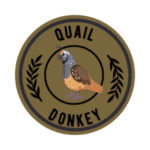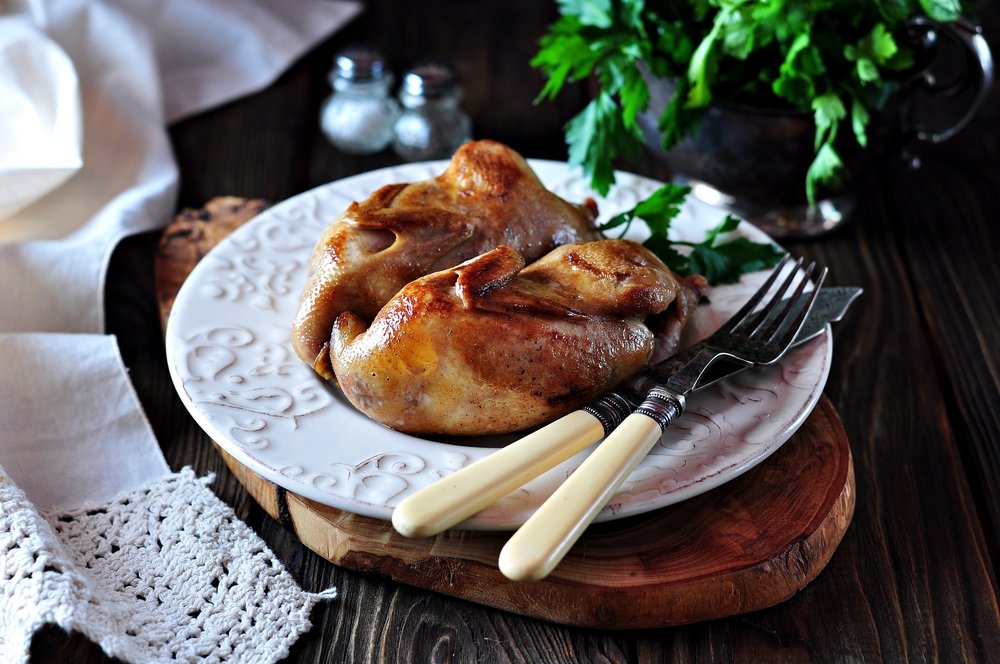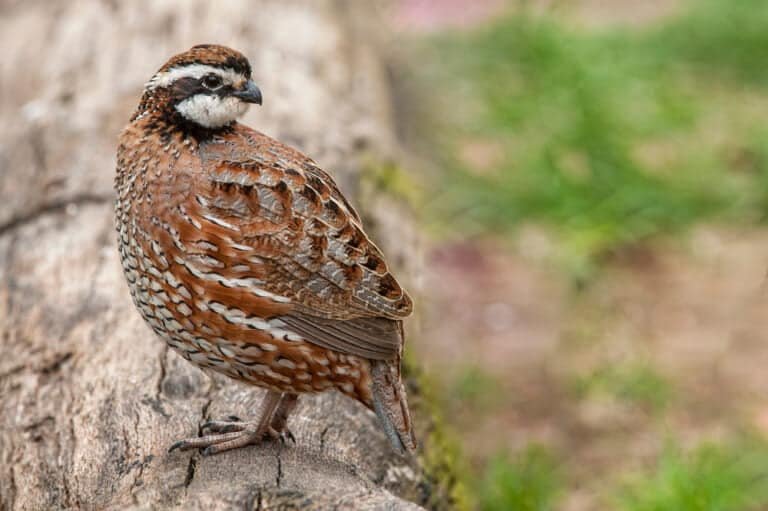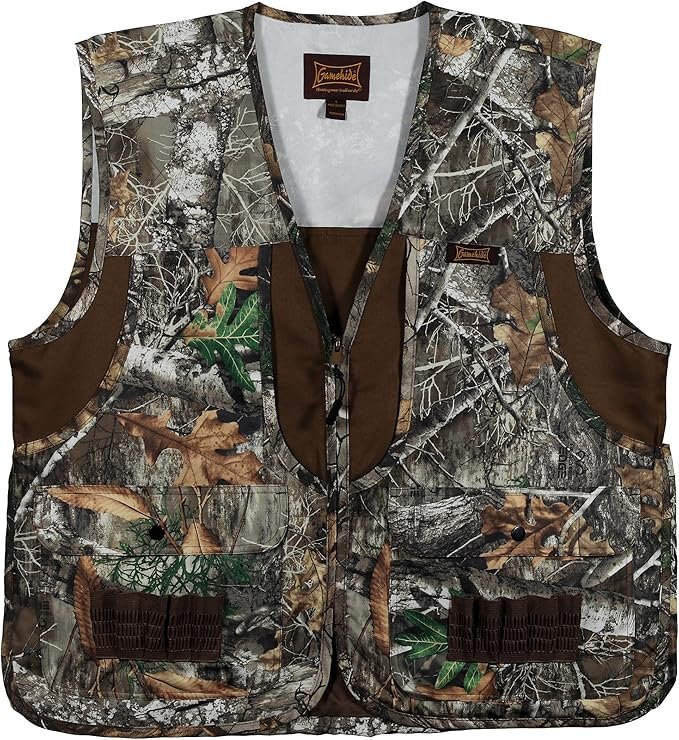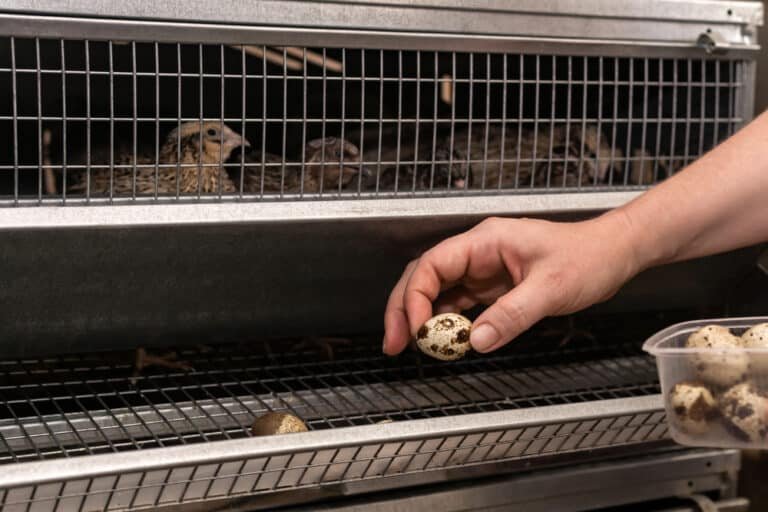The Best Choke for Quail Hunting in 2024
The flushing covey erupts in a heart-pounding moment. Your shotgun comes up, but will your choke choice make or break your shot? When hunting, using the best choke for quail can mean the difference between a limit in the bag and a frustrating day afield. Let’s get you ready!

For quail hunters, the pursuit of these swift, unpredictable game birds is both an art and a science. While skill and experience play crucial roles, the equipment you choose – particularly your shotgun’s choke – can significantly impact your success.
In this comprehensive guide, we’ll dive deep into the world of shotgun chokes, unraveling the mysteries behind constriction patterns and shot dispersal to help you select the perfect choke for your next quail hunting adventure.
Understanding Chokes for Quail Hunting

What is a choke, and how does it work?
A shotgun choke is a constriction at the muzzle end of the barrel that controls the spread of the shot as it leaves the gun. Think of it as a nozzle on a garden hose – the more you tighten it, the more concentrated the spray becomes. In shotgun terms, a tighter choke creates a denser pattern of pellets at longer distances.
Chokes work by gradually squeezing the shot column as it travels through the barrel. This compression causes the pellets to stay together longer after leaving the muzzle, resulting in different pattern densities at various distances. The degree of constriction determines how quickly the shot spreads and how dense the pattern remains at different ranges.
Common types of chokes, from most open to tightest, include:
- Cylinder (no constriction)
- Improved Cylinder
- Modified
- Improved Modified
- Full
Why choke selection matters for quail hunting
Choosing the right choke for quail hunting is crucial for several reasons:
- Effective range: The proper choke lets you maintain an effective killing pattern at typical quail shooting distances, usually between 15 to 35 yards.
- Pattern density: A well-chosen choke ensures that enough pellets hit the target to bring down the bird ethically and efficiently.
- Shot opportunities: Quail often flushes quickly and unpredictably. The right choke can balance pattern density and spread, increasing your chances of connecting with these fast-moving targets.
- Adapting to conditions: Different hunting environments and situations may call for different choke constrictions. Selecting the appropriate choke can significantly improve your versatility in the field.
- Minimizing meat damage: Using an overly tight choke at close range can lead to excessive pellet concentration, potentially ruining the bird for the table.
By understanding how chokes work and their impact on your shooting, you can make informed decisions to enhance your quail hunting success.
Choosing a Choke for Quail

When selecting the ideal choke for quail hunting, several key factors come into play. Understanding these elements will help you make an informed decision and improve your success in the field.
Typical shooting distances for quail
Quail hunting typically involves relatively close-range shooting compared to other bird hunting types. Most shots at quail occur between 15 and 35 yards. This range is crucial to remember when selecting your choke, as you’ll want a constriction that provides an effective pattern within these distances.
- Close range (15-20 yards): Common in thick cover or when birds flush unexpectedly
- Medium range (20-30 yards): The sweet spot for most quail hunting scenarios
- Longer range (30-35+ yards): Occasional opportunities, especially in more open terrain
Quail behavior and flight patterns
Understanding quail behavior can inform your choke choice:
- Covey flushes: Quail often burst into flight as a group, creating multiple, fast-moving targets
- Erratic flight: Quail are known for their quick, unpredictable movements once airborne
- Low flight: These birds typically fly close to the ground, rarely gaining significant altitude
These characteristics mean you’ll benefit from a choke that balances pattern density and spread well, allowing for quick target acquisition and effective shooting at various ranges.
Hunting environment (open fields vs. thick cover)
The terrain you’re hunting can significantly impact your choke selection:
Open fields
- Longer sight lines may lead to longer shots
- Less obstruction between you and the bird
- Might benefit from slightly tighter chokes for better long-range performance
Thick cover
- Closer flushing distances are common
- Obstructions can interfere with your shot
- More open chokes can be advantageous for quicker target acquisition and wider patterns
Considering these factors – shooting distances, quail behavior, and hunting environment – will guide you toward the most effective choke choices for your specific quail hunting situations.
Best Choke Options for Quail Hunting

When quail hunting, three choke types are generally considered the most effective: Improved Cylinder, Modified, and Improved Modified. Let’s examine each of these options in detail.
Improved Cylinder
Pros
- Wider pattern spread at close ranges
- Excellent for fast, close-flushing birds
- Forgiving for less experienced shooters
- Ideal for thick cover situations
Cons
- Pattern thins out quickly at longer ranges
- It may not be as effective beyond 30 yards
Improved Cylinder is often considered the go-to choke for quail hunting, especially when birds flush close, and shots are quick. It provides a good balance of pattern density and spread at typical quail hunting ranges.
Modified
Pros
- Versatile option for various hunting scenarios
- Good pattern density at medium ranges (20-30 yards)
- Effective for both close and moderately distant shots
- Works well in mixed-terrain
Cons
- It may be slightly tight for very close flushing birds
- Not ideal for consistently long-range shots
The Modified choke is a popular all-around choice for quail hunters. It offers versatility and maintains effectiveness across a range of distances commonly encountered in quail hunting.
Improved Modified
Pros
- Tighter pattern for better performance at longer ranges
- It is good for more open terrain where birds might flush farther out
- It can be effective for late-season hunting when birds are more skittish
Cons
- It may be too tight for very close shots
- Less forgiving for less experienced shooters
- Can potentially damage meat at close range
Improved Modified is a solid choice for hunters who frequently encounter longer shots or hunt in more open areas where quail might flush at greater distances.
Choosing between these options depends on personal preference, hunting style, and the conditions you typically encounter. Many experienced quail hunters choose the Improved Cylinder in one barrel and Modified in the other for maximum versatility.
It’s worth noting that some hunters also use skeet chokes for quail, especially in very close cover. While not as common, skeet chokes can be effective for quick, close-range shots.
Remember, the best way to determine which choke works best for you is through pattern testing and field experience. In the next section, we’ll discuss specialized quail chokes and aftermarket options that can further refine your shotgun’s performance.
Specialized Quail Chokes

While traditional chokes like Improved Cylinder and Modified are popular for quail hunting, several manufacturers have developed specialized chokes designed specifically for upland bird hunting, including quail. These aftermarket chokes often aim to provide optimal patterns for the typical ranges and conditions encountered in quail hunting.
Benefits of specialized quail chokes
- Optimized patterns: Designed to provide ideal pellet distribution at common quail hunting ranges (15-35 yards)
- Versatility: Many are designed to perform well across a range of distances
- Material quality: Often made from durable materials like stainless steel or titanium
- Reduced recoil: Some designs claim to help reduce felt recoil
Popular specialized quail chokes
- Trulock Precision Hunter Upland Special
- Designed for 20-40 yard shots
- Available in various constrictions
- Known for consistent patterns
- Carlson’s Cremator Sporting Clays Choke Tube
- While not exclusively for quail, many upland hunters find it effective
- It provides a good balance of pattern density and spread
- Kicks Industries Smoke Upland Choke Tube
- Designed specifically for upland hunting
- Claimed to provide denser patterns than standard chokes
- Patternmaster Classic Series
- Offers models specifically for upland hunting
- Known for producing tight, even patterns
- Briley Spectrum Upland Choke Tube
- Features a unique internal design to optimize shot patterns
- Available in various constrictions for different hunting scenarios
Considerations when choosing specialized chokes
- Compatibility: Ensure the choke is designed for your specific shotgun make and model
- Shot size: Some specialized chokes are optimized for certain shot sizes commonly used in quail hunting
- Cost: Aftermarket chokes can be more expensive than standard options
- Regulations: Check local hunting regulations to ensure the choke is legal for use in your area
While specialized chokes can offer advantages, they are unnecessary for successful quail hunting. Many hunters achieve excellent results with standard chokes. The key is to find a choke that patterns well with your shotgun and ammunition and suits your hunting style and conditions.
Matching Chokes to Your Shotgun and Ammunition

Selecting the right choke is only part of the equation. To achieve optimal performance in the field, it’s crucial to match your choke to your specific shotgun and ammunition. This process involves understanding how different components interact and conducting thorough pattern testing.
Importance of pattern testing
Pattern testing is shooting at paper targets to analyze how your shotgun, choke, and ammunition combination performs at various distances. It’s essential because:
- Every shotgun is unique: Even identical models can pattern differently
- Ammunition matters: Different loads can produce varying patterns with the same choke
- Confirms effectiveness: Ensures your setup is performing as expected for quail hunting ranges
- Builds confidence: Knowing your gun’s pattern helps you make better shooting decisions in the field
How to conduct a pattern test
- Set up targets at various distances (typically 20, 30, and 40 yards for quail hunting)
- Use large sheets of paper or specialized patterning targets
- Fire at least three shots at each distance for a reliable average
- Count the number of pellets within a 30-inch circle
- Calculate the percentage of pellets within the circle compared to the total in the shell
How different loads affect choke performance
- Shot size: Smaller shot (like #7.5 or #8 commonly used for quail) tend to pattern more tightly than larger shot
- Shell length: Longer shells may produce different patterns than shorter ones
- Shot material: Steel shot typically patterns tighter than lead (where lead is still legal)
- Velocity: High-velocity loads may pattern differently than standard-velocity loads
Tips for optimizing your choke and load combination
- Start with recommended loads: Begin with ammunition recommended by your choke manufacturer
- Experiment with different brands: Try various brands of ammunition to find what patterns best
- Consider premium loads: Sometimes, higher-quality ammunition can significantly improve patterns
- Be consistent: Once you find a combination that works well, stick with it for reliable performance
Factors to consider
- Ethical killing: Ensure your chosen combination provides sufficient pattern density for clean kills at your typical shooting distances
- Versatility: For quail hunting, look for a combination that performs well from 15 to 35 yards
- Personal preference: Some hunters prefer a more open pattern for close, fast shooting, while others prefer tighter patterns for longer shots
Remember, the goal is to find a choke and ammunition combination that provides consistent, effective patterns at the ranges you typically encounter when quail hunting. This may require some trial and error, but the time invested in pattern testing will pay off in improved performance and more successful hunts.
Tips for Using Chokes Effectively in Quail Hunting

Understanding your choke and how it performs is crucial, but applying that knowledge in the field is equally important. Here are some practical tips to help you use chokes more effectively when hunting quail:
When to switch chokes during a hunt
- Terrain changes: If you move from a thick cover to more open areas, consider switching to a tighter choke
- Time of day: As birds become more skittish later in the day, a slightly tighter choke might be beneficial for longer shots
- Weather conditions: Windy days might call for a tighter choke to maintain pattern density
- Seasonal changes: Late-season birds often flush wild, potentially requiring longer shots
Practical tips
- Know your effective range: Through pattern testing, determine the maximum distance at which you can consistently make clean kills with each choke.
- Practice mounting and swinging: Quick target acquisition is crucial in quail hunting, regardless of choke choice.
- Lead appropriately: Remember that more open chokes may require slightly more lead on crossing shots.
- Be mindful of safety: When changing chokes, always ensure your gun is unloaded and pointed in a safe direction.
Maintenance and care of chokes
- Regular cleaning: Clean your chokes after each hunting trip to prevent build-up and ensure consistent performance
- Proper installation: Always ensure chokes are correctly and securely installed before hunting
- Inspect for damage: Regularly check for any signs of wear, dents, or rust
- Lubrication: Lightly lubricate choke threads to prevent seizing and ease removal
- Storage: Store chokes in a dry place to prevent rust, preferably in a choke case
Advanced techniques
- Stacked chokes: For double-barrel shotguns, consider using different chokes in each barrel (e.g., IC in one, M in the other) for versatility
- Patterning at different ranges: Understand how your pattern changes at various distances to inform your shooting decisions
- Shot string awareness: Remember that your shot travels in a “string,” not a cloud. This can affect how you lead birds at different ranges.
Common mistakes to avoid
- Over-choked: Too tight a choke can lead to missed opportunities on close-flushing birds.
- Neglecting to pattern: Assuming all chokes perform the same with any ammunition can lead to suboptimal performance
- Ignoring choke condition: Worn or damaged chokes can significantly affect pattern quality.
Applying these tips and being mindful of your choke selection and performance can significantly improve your effectiveness in the field. Remember, the best choke is the one that works well with your shotgun, ammunition, and hunting style and allows you to harvest quail consistently and ethically.
Expert Opinions and Field Tests

To provide a well-rounded perspective on choke selection for quail hunting, it’s valuable to consider insights from seasoned hunters and results from field tests. This information can help validate or challenge conventional wisdom and provide practical, real-world guidance.
Insights from professional quail hunters
- Bob Smith, 30-year veteran guide in Georgia: “I’ve found that an Improved Cylinder choke is hard to beat for most quail hunting situations. It gives you the versatility you need when birds are flushing at various ranges. However, I always keep a Modified choke handy for those late-season hunts when birds are flushing wild.”
- Maria Rodriguez, competitive shooter, and avid quail hunter: “Many new hunters overthink choke selection. In my experience, a good, Improved Cylinder or light-modified choke will handle 90% of quail hunting scenarios. Focus more on your shooting skills and less on micro-adjusting your choke.”
- Dr. Tom Johnson, wildlife biologist, and lifelong quail hunter: “From a conservation standpoint, I recommend chokes that pattern well at 20-30 yards. This encourages ethical shooting distances and reduces the likelihood of wounding birds at excessive ranges.”
Results from pattern tests and field trials
- Shotgun Pattern Study (University of Georgia, 2022):
- Tested five popular chokes with three common quail loads at 20, 30, and 40 yards
- Results showed Improved Cylinder and Modified chokes consistently produced the most effective patterns for quail hunting distances
- Improved Modified chokes showed an advantage at 40 yards but at the cost of pattern density at closer ranges
- Field Trial: Traditional vs. Specialized Chokes (Quail Hunting Quarterly, 2023):
- 20 experienced hunters used both traditional and specialized upland chokes over a 3-day hunt
- Specialized chokes showed a marginal improvement in hit percentage (3-5%)
- However, hunters noted that proper gun fit and shooting skill were more significant factors than choke-type
- Ammunition Compatibility Test (National Shooting Sports Foundation, 2021):
- Tested ten popular quail hunting loads with various chokes
- Found that some premium loads designed for upland hunting produced noticeably better patterns across all choke types
- Emphasized the importance of testing your specific ammunition with your choke
Key takeaways from expert opinions and field tests
- Versatility is crucial: Most experts recommend chokes that perform well across typical quail hunting distances.
- Skill trumps equipment: While choke selection is important, shooting ability and gun fit are generally more critical factors.
- Pattern testing is essential: Experts unanimously stress the importance of pattern testing your specific gun, choke, and load combination.
- Ethical considerations: Choosing a choke that encourages shooting at appropriate ranges supports conservation efforts.
- Ammunition matters: The right ammunition can enhance performance across various choke types.
These expert insights and field test results provide valuable real-world context to help inform your choke selection. Remember, while this information is useful, your personal experience and the specific demands of your hunting scenarios should ultimately guide your choices.
Conclusion

Selecting the right choke for quail hunting is an important decision that can significantly impact your success and enjoyment in the field. Throughout this guide, we’ve explored the intricacies of choke selection, from understanding the basics to considering expert opinions and field test results. Let’s summarize the key points to help you make an informed decision:
Summary of key points
- Choke basics: Chokes control the spread of your shot, affecting pattern density and effective range.
- Common choices: Improved Cylinder and Modified chokes are popular for quail hunting due to their versatility.
- Factors to consider: Typical shooting distances, quail behavior, and hunting environment all play a role in choke selection.
- Specialized options: Aftermarket chokes designed for upland hunting can offer advantages but aren’t necessary for success.
- Pattern testing: It’s crucial to test your shotgun, choke, and ammunition combination to ensure optimal performance.
- Expert insights: Most seasoned hunters emphasize versatility and proper shooting technique over micro-adjustments in choke selection.
Final recommendations
- Start with versatility: For most quail hunters, an Improved Cylinder or light-modified choke will serve well in various situations.
- Consider your hunting style: If you frequently hunt in thick cover or open fields, you may want to lean towards more open or tighter chokes.
- Don’t neglect practice: Improving your shooting skills will likely impact your success more than fine-tuning your choke selection.
- Pattern test: Plan your gun with different choke and ammunition combinations to find what works best for you.
- Stay ethical: Choose a choke that encourages shooting at appropriate ranges for clean, ethical kills.
- Be adaptable: Consider carrying multiple chokes to adapt to changing conditions throughout your hunt.
Remember, the “best” choke for quail hunting is the one that works well with your shotgun, matches your hunting style, and allows you to consistently and ethically harvest birds. Don’t be afraid to experiment with different options, but don’t fall into the trap of thinking that a specific choke will magically transform your hunting success.
Ultimately, time spent in the field, practicing your shooting, and understanding quail behavior will contribute more to your success than any particular choke. Use this guide as a starting point, but let your personal experience in the field be your final teacher.
Happy hunting, and may your days afield be filled with the whir of flushing quail and the satisfaction of well-placed shots!
Frequently Asked Questions (FAQs)

To address some common queries about chokes for quail hunting, here’s a list of frequently asked questions:
Q: Can I use the same choke for upland bird hunting?
A: While an Improved Cylinder or Modified choke can be versatile for various upland birds, optimal choke selection may vary depending on the species and hunting conditions. Quail typically flush closer than pheasants, for example, so that you might prefer a slightly more open choke than pheasant hunting.
Q: Is it worth investing in expensive aftermarket chokes for quail hunting?
A: Aftermarket chokes can offer benefits but are unnecessary for successful quail hunting. Many hunters achieve excellent results with standard chokes. If you’re considering aftermarket chokes, ensure you pattern-test them to verify performance improvements.
Q: How often should I change my choke when quail hunting?
A: This depends on your hunting conditions. If you’re hunting varied terrain, you might change chokes once or twice during a day’s hunt. However, many successful hunters stick with a versatile choke like Improved Cylinder for an entire hunt.
Q: Can using the wrong choke damage my shotgun?
A: Using the wrong choke (like using a choke not designed for your shotgun) can potentially damage your firearm or cause safety issues. Always use chokes designed for your shotgun model and follow the manufacturer’s recommendations.
Q: Do I need different chokes for steel shot vs. lead shot when quail hunting?
A: Steel shot typically patterns tighter than lead, so you might choose a more open choke when using steel. Always pattern-test your gun with the specific ammunition you plan to use, regardless of shot material.
Q: How does barrel length affect choke performance for quail hunting?
A: Barrel length has less of an effect on pattern performance than many people think. Choke constriction is more important. However, longer barrels can provide a smoother swing, which may benefit some quail hunting scenarios.
Q: Is a full choke too tight for quail hunting?
A: In most cases, yes. A full choke is generally too tight for typical quail hunting distances and can lead to missed opportunities on close-flushing birds. It may also cause excessive damage to the bird at close range.
Q: How do environmental factors like temperature or humidity affect choke performance?
A: While these factors can affect ballistics, their impact on choke performance at typical quail hunting ranges is minimal. Focus more on how different loads pattern through your choke.
Q: Can I use the same choke for flushing and pointing dogs?
A: You can, especially if it’s a versatile choke like Improved Cylinder. However, some hunters prefer slightly tighter chokes (like Modified) when hunting behind pointing dogs, as birds may flush at slightly longer ranges.
Q: How much does choke selection matter compared to shooting skill?
A: While choke selection is important, shooting skill is generally more critical. A skilled shooter with a suboptimal choke will likely outperform a novice shooter with the perfect choke. Focus on improving your shooting skills alongside optimizing your equipment.
These FAQs cover many common concerns and curiosities about chokes for quail hunting. While this information provides a good starting point, personal experience and thorough pattern testing with your specific equipment will ultimately guide you to the best choke choices for your quail hunting adventures.
